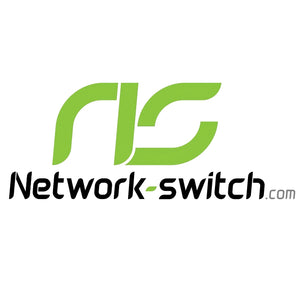Ethernet switches are at the heart of virtually every wired network—whether at home, in offices, or industrial environments. But an important question often arises: Do all Ethernet switches actually need power?
While the answer may seem obvious, it's worth exploring deeper. Understanding how Ethernet switches operate and whether they require power can help you make better decisions when building or expanding your network.
What is an Ethernet Switch?
An Ethernet switch is a network device that connects multiple devices (computers, printers, servers, cameras, Wi‑Fi access points, etc.) via Ethernet cables, enabling them to communicate over a Local Area Network (LAN).
Unlike simple hubs that broadcast data to all ports, switches create a direct path for each packet, forwarding it only to the specific device with the matching MAC address—ensuring efficient, collision-free communication and better performance.

How do Ethernet Switches Work?
- MAC‑Address Learning: A switch watches all incoming ethernet frames and records the source MAC addresses of devices and the ports they’re connected to.
- Intelligent Forwarding: It forwards a frame only to the destination port matching the MAC address, reducing unnecessary traffic.
- Switch Fabric: Internal switching architecture determines whether multiple ports can share bandwidth simultaneously.
- Full‑Duplex Mode: Ethernet switches support full‑duplex, allowing devices to send and receive data at the same time without interference.
In business settings, switches significantly improve network speed, ensure reliable connections, and reduce latency compared to wireless solutions.

Do Ethernet Switches need power?
Yes, all Ethernet switches require electrical power to operate. Here's why:
- Active Electronics: Switches contain chips, processors, buffer memory, and power circuits that process and forward data. These components need electricity—some devices operate on 5V DC (from USB or routers), others on 12V/48V DC via PoE, or even AC power supplies.
- PoE Functionality: Power-over-Ethernet (PoE) switches add to this—they can supply power to connected PoE devices directly through Ethernet cables (15W to 90W per port, depending on the PoE standard).
- No “Self-Powered” Option: Unlike passive devices, there's no such thing as an Ethernet switch that runs solely from network signals. Even the smallest switches need an external power source .
So yes, every Ethernet switch needs power—either through a standard power adapter or PoE.
Why Should Every Business Consider Using Ethernet Switches?
Ethernet switches provide numerous advantages to business networks:
Speed & Reliability
Wired Ethernet is still faster and more stable than Wi-Fi—especially important for video conferencing, real-time collaboration, and file transfers.
Network Scalability
Switches allow you to easily expand, segment traffic with VLANs, and provide Quality of Service (QoS) for critical applications .
Centralized Power with PoE
With PoE-enabled switches, devices like IP cameras and APs can be powered directly, allowing for centralized deployment and eliminating the need for separate power cabling.

Enhanced Security & Manageability
Managed switches support SNMP, ACLs, traffic monitoring, and VLANs—providing granular control over network access and performance .
Energy Efficiency & Sustainability
Modern switches support Energy-Efficient Ethernet (EEE) and configurable PoE budgets to reduce unnecessary power usage—a significant consideration for sustainability.
Business Continuity
Redundant switch architectures and centralized management reduce downtime and simplify troubleshooting, safeguarding business operations .
Final Thoughts
All Ethernet switches—borrowed or brand new—require general power to function. The question isn't if they need power, but how they're powered: via adapter, PoE, or another source. Understanding the type of switch and its power needs is essential for network design, ensuring optimal performance, expandability, and reliability.
Choosing the right switch whether unmanaged for simplicity, PoE for device expansion, or fully managed for complex environments, can significantly enhance your network infrastructure's capability and longevity.
Frequently Asked Questions
Q1: Can a PoE switch power itself through another PoE device?
A: No. PoE switches must be powered independently using AC adapters, inline injectors, or by being part of a PoE stack. They do not receive power from devices they serve.
Q2: Are unmanaged switches always better for small offices?
A: Unmanaged switches offer plug-and-play simplicity and are often cheaper. However, managed switches offer features like VLANs, QoS, and remote monitoring, which are increasingly valuable—even in small office settings.
Q3: How much power do typical switches consume?
A: Basic non‑PoE switches draw around 5–15W. PoE switches vary significantly, depending on how many ports are active and what devices are powered—ranging from 20W to over 200W total .
Q4: Do I need uninterruptible power for switches?
A: For mission-critical environments, yes. UPS backup ensures switches remain operational during outages, maintaining network access for devices like security cameras and VoIP systems.
Q5: Can switches be daisy-chained?
A: Yes, switches can be connected in sequence to expand your network. Managed switches support features like Spanning Tree Protocol and port aggregation to prevent loops and maximize bandwidth .
Final Summary
- All Ethernet switches need power (DC or AC) to operate—there are no bus-powered exceptions.
- PoE switches add the ability to power devices through Ethernet cables.
- Businesses should leverage Ethernet switches for improved speed, reliability, scalability, and centralized power provisioning.
Did this article help you or not? Tell us on Facebook and LinkedIn . We’d love to hear from you!






 https://network-switch.com/pages/about-us
https://network-switch.com/pages/about-us

























